Cannabis regeneration: pros and cons
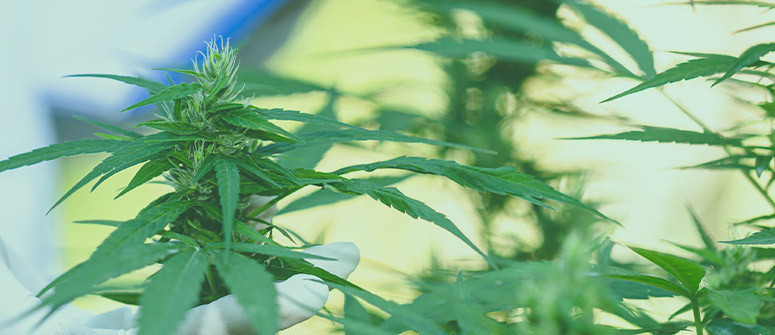
Think you can only get one harvest from a cannabis plant? Well, think again! Methods exist that allow us to send cannabis plants back to their youth, and harvest them all over again. In this article, we take a deep dive into cannabis regeneration.
Contents:
Cannabis plants give us buds, and then they die—usually! But what if there was something we could do to intervene in the intricate workings of nature and evolution, and encourage cannabis plants to return to youth and flower once again, providing one, two, or even three more harvests than nature intended?
Well, it’s possible.
In this article, we explore monster cropping and re-vegging—two ways to encourage cannabis regeneration and keep plants alive beyond the flowering period.
What is cannabis regeneration?
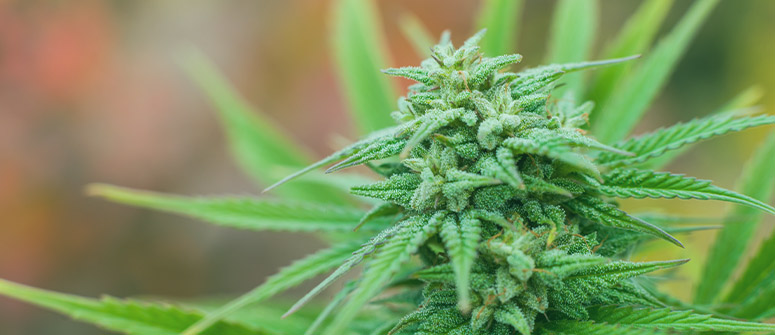
Cannabis regeneration—or re-vegging—is the process of returning a mature and flowered cannabis plant back to the vegetative stage so that it can flower all over again and produce additional harvests.
Cannabis is a plant that naturally emerges from its seed in the spring, grows through the summer, produces flowers and seeds in autumn, and then dies in the winter. Every spring brings with it a new generation of cannabis plants, and no specimen will live to see another year.
However, for nifty growers who want to eke even more from a single plant, or who want to preserve a much-loved phenotype, cannabis regeneration is a beneficial skill to master.
How successful is cannabis regeneration?
Cannabis regeneration is quite difficult, and yields mixed results. Mainly, growers do it to save time and achieve subsequent harvests in quick succession, or to preserve specific genetics. For casual growers who want to simply plant seeds and grow weed, regeneration is probably more trouble than it’s worth.
But for growers who want to take their cultivation skills to the next level, it’s well worth learning.
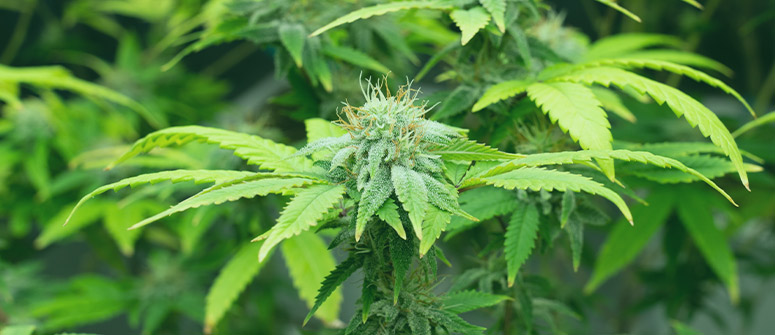
Reasons to regenerate cannabis plants
First, we’ll look at reasons why growers would choose to re-veg their plants. They’re plentiful, depending on what kind of grower you are.
Saves veg time
Getting a seed to grow into a full-sized plant that’s ready to flower can take a couple of months, depending on how big you want the final specimen to be. But when you re-veg a fully grown plant, it’s already at full size.
Re-vegging can cut out weeks compared to growing a new plant from seed, meaning that a second harvest can be achieved fairly quickly. That being said, the plant still needs some time in the vegetative stage once it comes back to life, before it can successfully flower. Still, it does save time if all goes well.
Saves space
You might not have the space to veg a second crop while the first crop is flowering, meaning you can only grow one crop after another. If you re-veg, then you can make the most of little space.
To preserve phenotypes
What if you grow one plant and it’s just perfect? It smells right, it tastes right, and it hits just right. It can be heartbreaking to let our favourite phenotypes perish, never to be experienced again.
Fortunately, re-vegging provides a solution! If you love a particular plant, you can revert it back to the vegetative stage, which in turn gives you several options. You can regrow it and rake in a second harvest, or you can take clones and grow new plants. Furthermore, you can try to force some of these to self-pollinate and trap the pheno in seed form, or even keep one as a mother plant.
Whatever you choose to do, re-vegging prized phenotypes allows you to keep their genetics alive.
No need for a mother plant
Re-vegging also means that you don’t need a single mother plant with a dedicated grow room all to herself. Instead of keeping one plant going and always taking cuttings from it, you can instead just re-veg plants you love, and keep a whole grow space free for producing even more buds!
No need for seeds
Obviously, if you re-veg a plant, then you don’t need to source new seeds. This can save time, money, and the stress of choosing from the thousands of options available to you. Stick to what you know; re-veg your plants!
More buds
It goes without saying that many growers re-veg in order to get more buds from a single plant. While the second yield can still be good, quality and quantity will diminish over time, meaning there will be less THC in your buds. You can’t endlessly re-veg a plant and expect it to keep pumping out fat buds forever.
Another re-vegging technique, monster cropping, is specifically designed to supercharge yields—by up to 40%!
Reasons to stay away from cannabis regeneration
But it’s not all good, and many people would be better off staying away from re-vegging and just growing plants from seeds or clones. It’s difficult, and it doesn’t always offer the results you might be after, especially compared to a spritely new plant.
Rather difficult
Cannabis regeneration is a fairly advanced technique that can easily go wrong. And if it does, you won’t be getting a second harvest. So it can end up being a lot of wasted effort if you don’t go about it right.
One way or another, whether you choose to re-veg or monster crop your plants, cannabis regeneration is an advanced form of high-stress training, and requires experience and knowledge.
Still, if you’re looking to increase your skill set, this is one of the more exciting training methods you can learn.
Plants need time to adjust
Plants will need a couple of weeks to show any signs of new growth, and a further few weeks in the veg phase to regain their strength. Re-vegging is a stressful process, and your plants will need time to recover. But if you’re after very large cannabis plants, it is still quicker than growing them straight from seed.
Smaller yields and less THC
Regenerated plants will produce smaller yields. If all goes well, the second harvest can still be pretty impressive, but after this it will wane. At first, quality should remain unchanged, but if you continue to re-veg plants, you’ll notice a dip in cannabinoid content as well as the overall quantity of buds.
Not suitable for all strains
Some strains just can’t handle being re-vegged or monster cropped. Both are strenuous processes that demand a lot from your plants. So if you choose to go for either of these methods, it’s recommended to try it out on robust plants that are known for being resilient in the face of adversity.
Predominantly suited for soil growing
Due to the nature of the process, it can only really be practised if you’re growing in a soil medium. Other forms of growing, such as hydroponics, are not suitable for cannabis regeneration.
How to regenerate cannabis plants
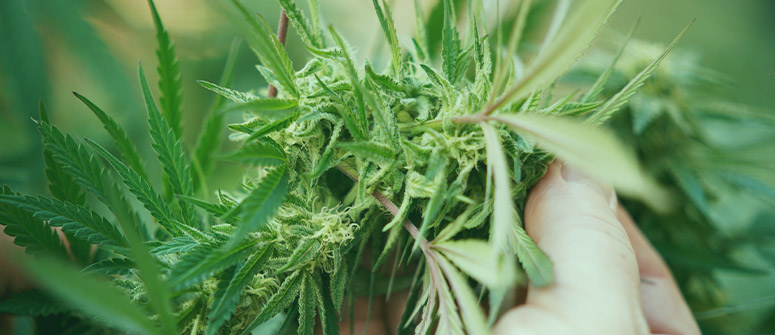
If you fancy having a go at cannabis regeneration, then the following sections will outline how to do it, depending on which method you want to try.
Re-vegging is best suited to indoor growing in soil, as the outdoor season doesn’t really provide enough time to veg, flower, re-veg, and re-flower a plant. Plus, an indoor environment gives you much more control, meaning that you can save the plant from other forms of stress, thereby optimising its recovery.
Also, you can't re-veg autoflowering plants. As they don’t follow a photoperiod, but rather grow according to an internal genetic clock, it is not possible to switch them back to the veg phase.
Monster cropping
Monster cropping is a training method that utilises the re-vegging process to increase yields by up to 40%.
It involves allowing a plant to enter the flowering stage, then taking cuttings from the lower branches. These cuttings are then planted and reverted to the veg stage. Once they have taken root, they can be grown for longer, or switched back to flower.
Often, monster cropping is combined with low-stress training techniques such as SOG. In this way, many small cuttings can be grown close together and used to produce a very large yield.
Monster cropping does not involve allowing a plant to become fully mature and then re-vegging it, and so it is a less dramatic form of cannabis regeneration compared to a full re-vegging process.
Re-vegging after harvest
A more difficult method is to let a plant complete its life cycle, harvest the upper buds, transplant it, and switch it back to vegging. How do you do this?
To re-veg a fully mature plant, follow these steps:
- Prune selectively: Remove buds and leaves from the top two-thirds of the plant, but leave the lowest third intact. Later, the new growth will emerge from the parts of the plant that you have pruned.
- Cover cuts: To help your plant out, you can bandage up the open wounds to reduce the chances of infection and give it more strength to dedicate to the process of re-vegging.
- Remove the plant from the pot and soil.
- Wash the roots with lukewarm water, and prune any that appear defective.
- Repot in new soil: This new home will help to revert the plant back to the vegetative stage.
- Feed it like a seedling: Give it nitrogen-rich fertiliser. This will encourage new, strong root growth and help the plant revert.
- Give it 20–24 hours of light: Just for a week or two, keep it under almost constant light. This light exposure helps to force the plant back into the vegetative stage.
- Switch to a veg light cycle: Once you see new growth emerging, you’ll know your plant has successfully reentered the vegetative stage. At this point, you can go back to an 18/6 light cycle.
- Switch to flowering: Once your plant has spent a few weeks successfully vegetating again, it should be robust and healthy, and ready to go back to flowering for a second round!
How many times can you re-veg a cannabis plant?
It’s unclear how many times you can repeat the process, but most people agree that four times is the absolute maximum in terms of it being worthwhile. After this point, yield and quality will be so reduced that you’d be much better off just growing a new plant.
Some people may only choose to re-veg once, as yields do start to decline immediately. As the process is only slightly faster than growing a new plant, it ceases to be worthwhile if the yields drop significantly.
Accidentally re-vegging cannabis
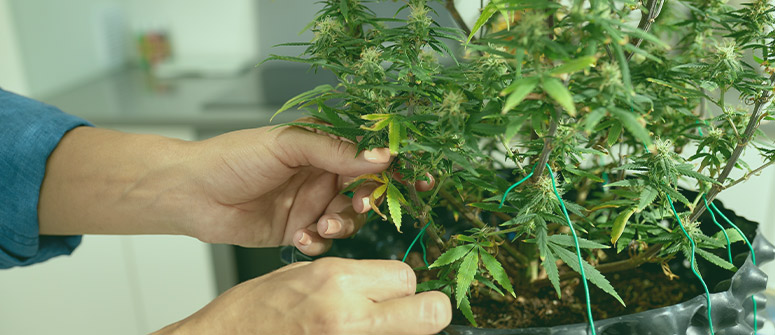
It is possible for plants to unintentionally start re-vegging partway through their flowering stage. This happens to photoperiod plants and is the result of accidental and unexpected changes in lighting, which throw off a plant’s photoperiod.
Indoors, there are two causes for accidental re-vegging:
- Light leaks: This is the most common reason that indoor plants would revert to the vegetative stage. Light leaks occur when the grow space isn’t fully insulated against outside light, or you go in and out too much during the flowering stage. To ensure there are no light leaks, go inside the tent when it is dark inside, and turn the lights on outside. Can you see any leaking in? If so, cover the hole with black duct tape.
- Faulty timers: Less likely, but it’s possible a timer isn’t working properly—or you set it wrong—and so your desired 12/12 light cycle is amiss. In this case, investigate what the error is and either reset it or buy a new timer.
Accidental re-vegging can also occur outdoors, here’s how:
- Moving plants: If you move plants around outdoors, it’s possible that changes in light exposure might cause them to revert to the veg stage. So if you move them during flowering, be sure not to position them in a spot that gets a lot more light to the one from which they’ve been moved.
- Nighttime light: If you’ve got street lights that shine into your garden, or a neighbour leaves their lights on during the night, then this artificial light can throw your plants off. Unless you’re on very good terms with the council and your neighbours, there’s probably not much you can do to change this. Therefore, your best bet is to move your plants to somewhere more sheltered, or build something to shield them from this nighttime light.
What are the symptoms of re-vegging plants?
You’ll notice a plant is re-vegging because bud growth will stop entirely. They won’t disappear, but they will stop getting any bigger or producing new trichomes or pistils. Instead, you might notice the plant putting out new fan leaves or maybe even growing bigger.
Leaf and stem growth shouldn’t take place during flowering—other than right at the beginning—so if you notice this sort of growth once your plant is producing flowers, then it is probably re-vegging.
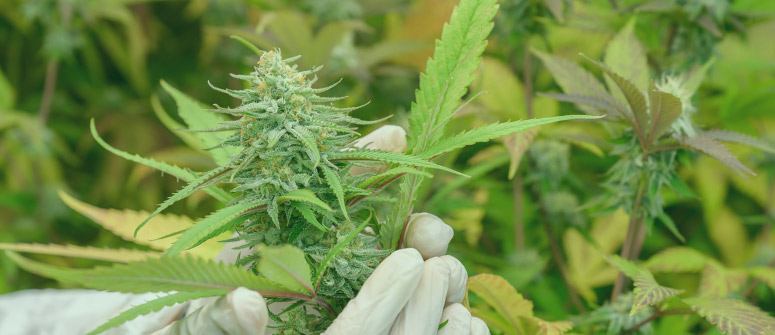
How to avoid and treat re-vegging cannabis
To avoid re-vegging, the best thing you can do is ensure that your plant gets proper periods of complete darkness—around 12 hours a day. If you do this, then you shouldn’t have any issues.
If you notice your plant is re-vegging, exposing it to a consistent 12/12 light cycle will switch it back to flowering and get you back on track. If you have to do this, though, keep an eye out for signs of hermaphroditism. Re-vegging will stress your plant, and it might respond by becoming a hermie, which can upset your grow.
Cannabis regeneration: lots of benefits
Cannabis regeneration is a great tool for keeping hold of precious phenos and getting more bud from a single plant. In the case of monster cropping, it can massively increase yields by taking clones from a flowering plant and growing these. By re-vegging harvested plants, you can coax the plant into reaching harvest once, twice, or even thrice more than it would naturally. Still, you should be aware that you will face reduced quality and yields with each subsequent re-veg.
If you’re an experienced grower who's thirsty to grow their skill set, cannabis regeneration is a very important technique to learn!




